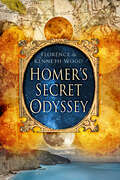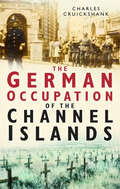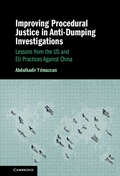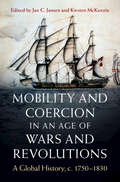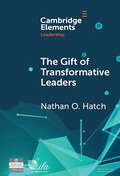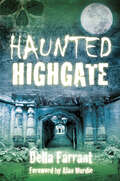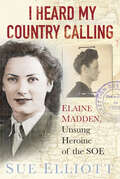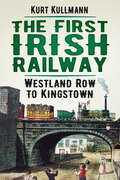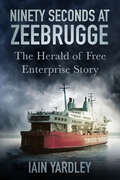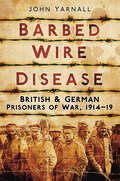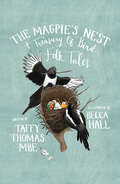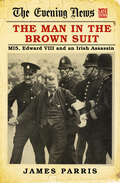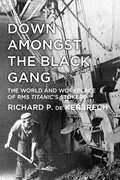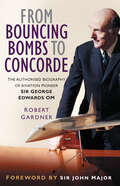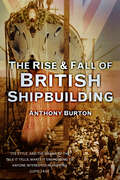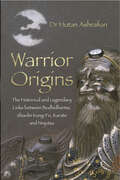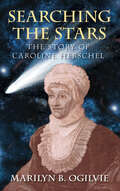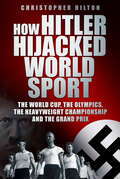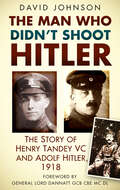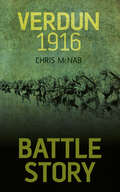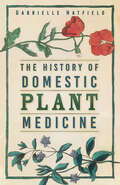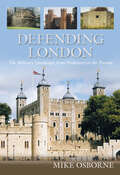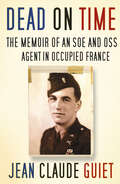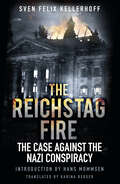- Table View
- List View
Homer's Secret Odyssey
by Kenneth Wood Florence WoodHomer is renowned as the finest of the storytellers who for countless generations passed down by word of mouth the myths and legends of Ancient Greece. Yet, for some 2500 years there have been persistent folk memories that his genius extended far beyond literature and that scientific knowledge was hidden in his stories of heroes and villains, gods and ghosts, monsters and witches. Research now reveals that at a time when the Greeks did not have a written script, Homer concealed an astonishing range of learning about calendar making and cycles of the sun, moon and planet Venus in the Odyssey, his epic of the Fall of Troy and the adventures of the warrior-king Odysseus.
The German Occupation of the Channel Islands
by Charles CruickshankCharles Cruickshank provides a full account of the German invasion, the subsequent landings of various British agents, raids and an attempt to end the occupation using psychological warfare. He also looks at how the islanders and Wehrmacht lived, the reality of collaboration with the occupying powers and the extent of support for the Resistance.
Improving Procedural Justice in Anti-Dumping Investigations: Lessons from the US and EU Practices Against China
by Abdulkadir YilmazcanBy synthesizing both theoretical and empirical insights, this book offers a distinctive perspective on procedural justice within the context of anti-dumping investigations. The book highlights the disjunction between the provisions outlined in the World Trade Organization's Anti-Dumping Agreement (ADA) and the practical encounters faced by stakeholders such as exporters, regulatory bodies, and legal experts affiliated with the WTO. Employing a mixed-method approach, the research encompasses a comprehensive doctrinal analysis of procedural complexities alongside empirical investigations involving key stakeholders such as WTO legal experts, Chinese exporters, and investigating authorities. Furthermore, this book underscores the potential for enhancing procedural justice through either a comprehensive reform of the ADA or concrete measures such as a standardized anti-dumping questionnaire. Such improvements offered in the book have the potential to curtail the misuse of anti-dumping investigations, consequently mitigating a substantial number of disputes that might be brought before the WTO's Dispute Settlement Mechanism.
Black Plaques London: Memorials to Misadventure
by John Ambrose HideBlack Plaques are not to be found proudly mounted on a wall – and for good reason. What with their commemoration of a brutal execution outside Westminster Abbey, the selling of sex toys in St James’s Park and an intruder at Buckingham Palace with Royal undergarments stuffed down his trousers, this is not sort of historical subject matter that authorities choose to grace a building’s facade or depict on a visitor information board. In fact, many might hope that such indecorous and inconvenient episodes remain quietly overlooked. But this book jogs such artful lapses of memory and at more than one hundred locations across London, Black Plaques lift the carefully placed rug to discover an unsightly, but strangely beckoning, stain.
Mobility and Coercion in an Age of Wars and Revolutions: A Global History, c. 1750–1830 (Publications of the German Historical Institute)
by Jan C. Jansen Kirsten MckenzieThe political upheavals and military confrontations that rocked the world during the decades around 1800 saw forced migrations on a massive scale. This global history brings this explosion into full view. Rather than describing coerced mobilities as an aberration in a period usually identified with quests for liberty and political participation, this book recognizes them as a crucial but hitherto under-appreciated dimension of the transformations underway. Examining the global movements of enslaved persons, soldiers, convicts, and refugees across land and sea, Mobility and Coercion in an Age of Wars and Revolutions presents a deeply entangled history. The book explores the binaries of 'free' and 'unfree' mobility, analyzing the agency and resistance of those moved against their will. It investigates the importance of temporary destinations and the role of expulsion and deportation and exposes the contours of a world of moving subjects integrated by overlaps, interconnections, and permeable boundaries. This title is also available as Open Access on Cambridge Core.
The Gift of Transformative Leaders (Elements in Leadership)
by Nathan O. HatchGreat organizations flourish at the hands of transformative leaders. Most organizations remain competitive but are unlikely to advance without impetus. Only exceptional leaders in an organization can fulfill an ambition for real institutional advancement. In this Element, Nathan Hatch, a former university president and provost at two top-30 national universities, draws on their more than forty-year career in higher education to showcase leaders the author recruited and empowered to advance and transform institutions. At each institution, the author witnessed pockets of mediocrity transform into national examples of excellence. Finding the right leader to spearhead the work was the key to growth and success nearly every time. Through the stories of thirteen transformative leaders, Hatch illuminates how the author approached identifying talent and empowered leaders to lead in bold and creative ways.
Haunted Highgate
by Della FarrantCompiled by paranormal investigator Della Farrant, this new book contains a chilling range of spooky tales from around Highgate. From haunted public houses and private homes taken over by malevolent poltergeists to a top-hatted fiend who hisses at passers-by and the ‘vampire’ sightings of the 1970s at Highgate’s world-famous cemetery, this collection of ghostly goings-on is sure to appeal to everyone interested in North London’s supernatural residents. Richly illustrated, Haunted Highgate is the ideal guide for anyone who wishes to delve deeper into the area’s mysterious history.
I Heard My Country Calling: Elaine Madden, SOE Agent
by Sue ElliottAfter a tragic childhood among the Great War cemeteries of Flanders Fields, a troubled young woman searches for love and meaning in war-ravaged Europe. Elaine Madden’s quest takes her from occupied Belgium through the chaos of Dunkirk, where she flees disguised as a British soldier, into the London Blitz, where she finally begins to discover herself. Recruited to T Section of the Special Operations Executive (SOE) as a ‘fast courier’, she is parachuted back to the country of her birth to undertake a top-secret political mission and help speed its liberation from Nazi oppression. Elaine Madden never claimed to be a heroine, but her story proves otherwise. Its centrepiece – war service as one of only two women SOE agents parachuted into enemy-occupied Belgium – is just one episode in an extraordinary real-life drama of highs and lows, love, loss and betrayal. Relayed to the author in the final years of her life, Elaine’s true story of courage and humour in testing times is more intriguing, more compelling than fiction.
The First Irish Railway: Westland Row to Kingstown
by Kurt KullmannThe first Irish railway ran from Westland Row, in the centre of Dublin, to Kingstown, then a seaside resort on the coast south of the city. This historic line is now the DART line, Kingstown has become Dún Laoghaire and the world has changed around it. In this work, historian and author Kurt Kullmann recreates this era and takes us on a scenic journey through Ireland’s past.
Ninety Seconds at Zeebrugge: The Herald of Free Enterprise Story
by Iain YardleyThe Herald of Free Enterprise car ferry set sail on a routine voyage to Dover in March 1987, carrying hundreds of passengers, including British army personnel, day-trippers and truck drivers. Minutes after leaving the Belgian port of Zeebrugge, the ferry began to capsize. Terrified passengers were separated from loved ones in a seething mass of humanity, in freezing cold water and had to fight for their lives. This is the minute-by-minute account of those who lived through the disaster, from the event to rescue, reunion and repatriation. The Belgian people are also remembered for the care and comfort they gave to the bewildered and grief-stricken survivors. Including plans, photographs and records considering how this disaster impacted ferry operating procedures forever, Iain Yardley’s thoughtful study covers every aspect of this tragedy. Many survivors, relatives and rescue workers have contributed to make this a fitting tribute to all involved from that night to the present day.
Barbed Wire Disease: British & German Prisoners of War, 1914-19
by John YarnallBy the time of the Armistice in 1918, some 6.5 million prisoners of war were held by the belligerents. Little has been written about these prisoners, possibly because the story is not one of unmitigated hardship and cruelty. Nevertheless, hardships did occur and the alleged neglect and ill-treatment of prisoners captured on the Western Front became the subject of major propaganda campaigns in Britain and Germany as the war progressed. 'Barbed Wire Disease' looks at the conditions facing those prisoners and the claims and counter-claims relating to their treatment. At the same time, it sets the story in the wider context of the commitment by both governments to treat prisoners humanely in accordance with the recently agreed Hague and Geneva Conventions. The political and diplomatic efforts to achieve this are examined in detail, and it concludes by examining the failed first-ever efforts to bring war criminals to justice before international tribunals.
The Magpie's Nest: A Treasury of Bird Folk Tales
by Taffy Thomas Becca HallFrom crowded train stations to quiet woods and from city centres to our own back gardens, birds remind us that nature is everywhere. But do you know which is the king of the birds? Has anyone ever told you how the brave swallow got its forked tail? And what of the owl, who was really a baker’s daughter?Take a look inside The Magpie’s Nest, where a hoard of stories, riddles and rhymes is waiting for you.Suitable for all ages and charmingly illustrated by Lakeland artist Becca Hall, this is an essential collection of stories for all who love the natural world.
The Man in the Brown Suit: MI5, Edward VIII and an Irish Assassin
by James ParrisOn 16 July 1936 a man in a brown suit stepped from the crowd on London’s Constitution Hill and pointed a loaded revolver at King Edward VIII as he rode past. The monarch was moments from death. But MI5 and the Metropolitan Police Special Branch had known for three months an attack was planned: the man in the brown suit himself had warned them. This mysterious man, lost to history, was George McMahon, a petty criminal with a record of involvement with the police. He was also an MI5 informant, providing intelligence on Italian and possibly German espionage in Britain. Dismissed by the rest of the world as a drunken loser and fantasist, he saw his life as an epic drama. Why did MI5 and the police fail to act? Was it a simple blunder on the part of the security services, or was something far more sinister involved? In this first full-length study of the threat to the life of Edward VIII, James Parris uses material from MI5 and police files at the National Archives to reach explosive conclusions about the British Establishment’s determination to remove Edward from the throne.
Down Amongst the Black Gang: The World and Workplace of RMS Titanic's Stokers
by Richard P. KerbrechDown in the fiery belly of the luxury liner RMS Titanic, a world away from the first-class dining rooms and sedate tours of the deck, toiled the ‘black gang’. Their work was gruelling and hot, and here de Kerbrech introduces the reader to the dimly lit world and workplace of Titanic’s stokers. Beginning with a journey around some of the major elements of machinery that one might encounter in the giant ship’s engine and boiler rooms, those with a technical mind would be sated, while the accessible style would aid the lay reader in this more specialist title. The human side of working for the most famous liner is also involved in an exploration of stokers’ duties, environment and conditions: what it was like to be one of the ‘black gang’.
From Bouncing Bombs to Concorde: The Authorised Biography of Aviation Pioneer Sir George Edwards OM
by Robert Gardner John MajorGeorge Edwards' name is synonymous with the Vickers Viscount, the world's first turboprop airliner; the controversial TSR2 project and the legendary Anglo-French Concorde. During the Second World War, it was Edwards who made the Dam Busters' bouncing bombs bounce.
The Rise and Fall of British Shipbuilding
by Anthony BurtonFrom modest beginnings, Britain rose throughout the nineteenth century to become the greatest shipbuilding nation in the world, yet by the end of the following century the British merchant fleet ranked just 38 in the world. The glory days of sail had given way to the introduction of the steam age. Traditional shipwrights had railed against new industrial methods resulting in the infamous demarcation disputes. Talented men, like Brunel and Armstrong, had always sought change and development, but too many shipbuilders were relying on old technologies. From building mighty battleships and extravagant ocean liners, the nation became complacent and its yards were eventually no longer as innovative as their foreign competitors. In the twenty-first century, British shipbuilding has shrunk to a mere fraction of its former size and has become almost totally dependent on government contracts. The popularity of and fascination with this subject has prompted a new edition of Anthony Burton’s successful book. With fresh images and a new, final chapter, the story of the rise and cataclysmic fall of British shipbuilding has been brought right up to date.
Warrior Origins: The Historical and Legendary Links between Bodhidharma, Shaolin Kung-Fu, Karate and Ninjutsu
by Hutan AshrafianWarrior Origins is an account of the history and legends of the world’s prominent martial arts and how they share a common heritage. It chronicles the origins of the Shaolin warrior monks, Shaolin Kung-Fu and their celebrated founder, Bodhidharma, who is also considered the first patriarch of Zen (Chan) Buddhism. The book considers Bodhidharma’s origins in the context of ancient Persia and its royal houses and continues with the rise of Karate from ancient Okinawan roots to Japan and then into a global sport. It connects the record of Ninja and Ninjutsu and the influence of some of its latter luminaries, including Seiko Fujita, whilst also revealing new evidence on renowned martial artists such as Bruce Lee. This work takes a dramatically original approach to the heart of the martial arts and their founders. Author Dr Hutan Ashrafian, who holds black belt grades in several martial art styles, including a 5th Dan in Okinawan Goju-Ryu Karate and championship medals in Karate and Judo at World and European Masters level, delineates the inheritance of these arts using innovative evolutionary approaches to find previously unidentified links between them. Warrior Origins traces the pattern from Bodhidharma to the remarkable diversity of modern martial arts.
Searching the Stars: The Story of Caroline Herschel
by Marilyn B OgilvieCaroline Herschel is best known as the less significant sister of the astronomer William Herschel. Yet the romantic notion of her tirelessly working for her brother while he made his studies of the heavens, documenting his discoveries so he could achieve greatness in the scientific world, couldn't be further from the truth. When Caroline wasn't working as her brother's assistant, she was sweeping the stars with her own small telescope given to her by William. Not only did she unearth three important nebulae, but she discovered no fewer than eight comets in her own right. When William became Astronomer Royal to King George III in 1782, Caroline too received an annual salary, making her the first ever woman to work as a professional scientist. William was made a fellow of the Royal Society in 1781 after discovering the planet Uranus. It wasn't until 1828, but the Society would eventually reward Caroline too, with its Gold Medal. This award would not be awarded to another woman until 1996. Searching the Stars reveals the hardships experienced by a woman pursuing a male profession. Yet how did this unattractive, diminutive woman gain the respect of her professional colleagues, her country and even her king? As Marilyn B. Ogilive investigates this extraordinary life, the determination, humility and passion of one unremarkable woman come to light.
How Hitler Hijacked World Sport: The World Cup, the Olympics, the Heavyweight Championship and the Grand Prix
by Christopher HiltonAdolf Hitler understood the importance of sport, and exercised his malign and dangerous influence to try to co-opt it for the Nazi cause. He intended to own the Olympic movement, housing it permanently in Berlin from 1940 in a stadium seating 450,000 people. His hijack of the 1936 Games remains one of sport’s most controversial events, using it as he did to promote Aryan supremacy and showcase the Nazi state. Austria was forced to withdraw from the 1938 football World Cup just days before it started because the country no longer existed. The boxing matches between Joe Louis and Max Schmeling in 1936 and 1938 came to represent democracy versus fascism. German technology crushed all comers in Grand Prix racing, as well as the Isle of Man TT. A government ministry was even set up to use physical fitness to prepare the population for war. Hitler understood that sport has many uses: this is how he used it.
The Man Who Didn't Shoot Hitler: The Story of Henry Tandey VC and Adolf Hitler, 1918
by David JohnsonThis is the tale of two men.The first is Henry Tandey, an ordinary man later deemed to be ‘a hero of the old berserk type’, born and brought up in Leamington Spa, Warwickshire, who displayed extraordinary courage to emerge from the First World War as the most decorated British private to survive. The second is Adolf Hitler, who was highly decorated in his service to Germany in the First World War and went on to become one of the most infamous dictators in history, later bringing the world to the brink of destruction during the Second World War. It seems unlikely that their fates should collide. Yet in 1938 Hitler named Tandey as the soldier who spared his life on 28 September 1918 in the aftermath of the Battle of Marcoing – an assertion that came as a surprise to Tandey himself. The Man Who Didn’t Shoot Hitler tells the story of Tandey’s and Hitler’s Great War, the moment when their lives became intertwined – if in fact they did – and how Tandey lived with the stigma of being known not for his chestful of medals for gallantry in service of King and Country, but as the man who let Hitler live.
Battle Story: Verdun 1916
by Chris McNabThe Battle of Verdun was one of the bloodiest engagements of the First World War, resulting in 698,000 deaths, 70,000 for each of the 10 months of battle. The French Army in the area were decimated and it is often most tragically remembered as the battle in which the French were ‘bled white’. A potent symbol of French resistance, the fortress town of Verdun was one that the French Army was loath to relinquish easily. It was partly for this reason that the German commander chose to launch a major offensive here, where he could dent French national pride and military morale. His attack commenced on 21 February, using shock troops and flamethrowers to clear the French trenches. Starting with the capture of Fort Douamont, by June 1916 the Germans were pressing on the city itself, exhausting their reserves. The French continued to fight valiantly, despite heavy losses and eventually rolled back German forces from the city. In the end it was a battle that saw much loss of life for little gain on either side.
The History of Domestic Plant Medicine: The History of Domestic Plant Medicine
by Gabrielle HatfieldThe debt medicine owes to botany is not commonly appreciated. In the past, medicine relied almost entirely on plants, and even today, many western medicines are plant derived. Despite this, historians have largely neglected the study of domestic medicine, practised by the ordinary person and passed down through generations, in favour of ‘official medicine’. The History of Domestic Plant Medicine brings together manuscripts, letters, diaries, personal oral interviews and other primary evidence to produce a detailed picture of the medicinal use of native plants in Britain from 1700 to the present day. Recording for posterity this neglected aspect of our heritage, it is a valuable contribution to the study of the folklore of modern Britain and a fascinating piece of social history.
Defending London: The Military Landscape from Prehistory to the Presenr
by Mike OsborneFor two thousand years London has been at the heart of Britain’s development as a nation, providing a focus for its political life. The military element is now usually visible only through the pageantry which attends royal occasions, but this masks a more serious underlying intent. Frequently the target for both foreign invaders and domestic factions, it has been required to defend itself against everything from seaborne raiders to aerial bombardment and the threat of nuclear war. At the same time, the direction of military affairs has been centred on London, along with the military infrastructure of barracks, depots, magazines, dockyards and munitions factories. The evidence for much of this can be seen in the landscape, from the mediaeval Tower of London and the underground nuclear citadels in the urban centre, to the royal palaces, moated sites, airfields and anti-invasion defences in the suburbs and the green belt. This book describes the various elements of London’s military heritage, and places them in their historical and social context. From the castles and strong-houses of the mediaeval and Tudor monarchs and statesmen, to the pseudo-fortresses of the Victorian militia and rifle volunteers; the airfields of the anti-Zeppelin fighters of the Royal Flying Corps, and the Battle of Britain bases of the RAF, to the pillboxes of the defences against invasion in 1940, and the anti-nuclear defences of the Cold War and beyond.
Dead on Time: The Memoir of an SOE and OSS Agent in Occupied France
by Jean Claude GuietJean Claude Guiet, born in France and raised in the US, attended Harvard aged 18 until, as a ‘naïve’ 19-year-old, he entered the US Army in 1943. As a native French speaker he was quickly assigned to SOE and the OSS (the precursor of the CIA) and parachuted into occupied France in the lead up to D-Day. After the liberation of Paris he was sent to Indochina to organise and train tribes in the jungles of the Far East to fight the Japanese. Subsequently he worked for the CIA in Washington. Told with characteristic understatement and charm, Jean Claude’s writing perfectly captures the variety of his own long and fascinating life. Much more than one man’s memoirs, Dead on Time is a tribute to a unique generation whose lives were regularly filled with both danger and laughter.
The Reichstag Fire: The Case Against the Nazi Conspiracy
by Sven Felix Kellerhoff Karina BergerWho really caused the Reichstag fire on the evening of 27 February 1933? Were the Nazis really to blame? The debate has been going on for over eighty years as to who started the Reichstag fire and, in turn, became the catalyst of the Nazi dictatorship. The Reichstag Fire hopes to shed light on this enduring discussion. Using careful analysis of source material, award-winning journalist Sven Felix Kellerhoff charts the outbreak of the fire, the Reich Cabinet’s response to the event, Marinus van der Lubbe’s repeated confession to the crime, and the far-reaching consequences of the fire.
